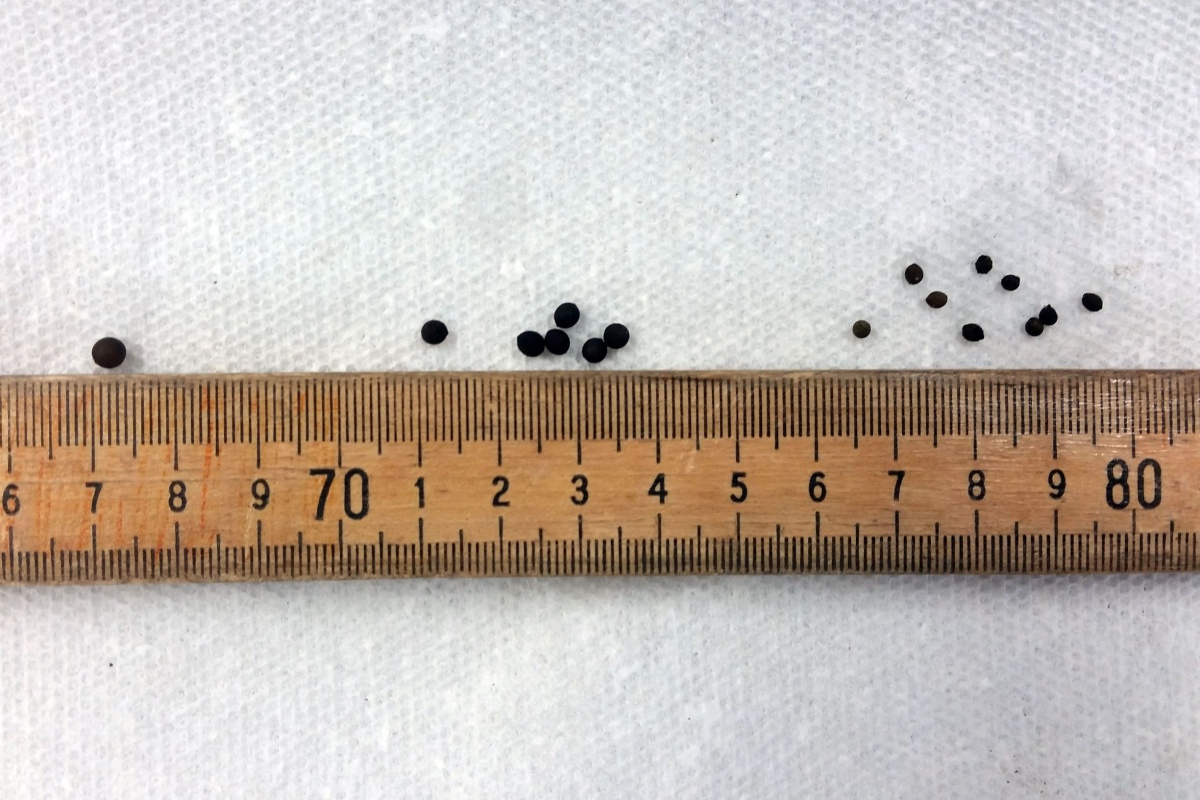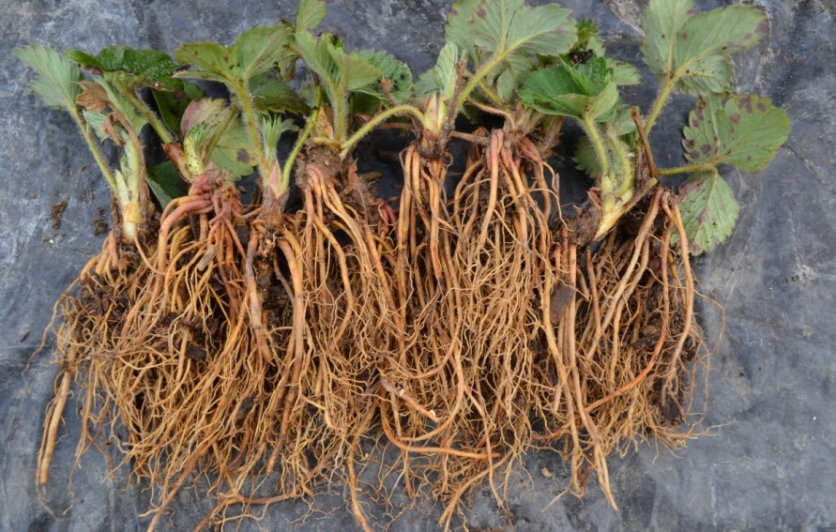As gardeners, we’re already well trained to look for signs of disease, weeds, root health, and pests when buying, selling, or swapping plants. This diligence gives us confidence that as we bring new plants and soil into our gardens, we’re not bringing problems too. Today, a new threat to our soil health and successful gardening has emerged on the scene: the jumping worm (Amynthas spp.), also commonly known as the crazy worm and snake worm.
University Cooperative Extension services throughout the country are continuing research on possible control strategies for these jumping worms, but as gardeners it is important to identify ways to minimize their spread and contain them. These worms are invasive and cause harm to the soil, unlike other common earthworm species. Jumping worms feed voraciously on the soil organic matter and excrete material that appears grainy, like coffee grounds, which changes the soil chemistry and decreases nutrient availability. This may at times create soil conditions that favor invasive plant species over native plants.
Identification of Jumping Worms
Jumping worms are smooth, glossy brown or grayish and they move more like a snake rather, than crawling. Jumping worm eggs hatch in the April/May time period and will continually grow, from 1 inch up to 8 inches long, until the soil freezes and kills the adults. The narrow band around the worm, called the clitellum, goes completely around its body, is usually white to gray colored, and is smooth to the body. This clitellum is also closer to the worm’s head than with the typical European earthworm you are familiar with. Our familiar earthworms also have a raised clitellum that does not go completely around the body. The jumping worms hatch from eggs laid in the fall, which are in protected cocoons. These cocoons are very small and difficult to see with the naked eye.
Learn more at extension.unh.edu/blog/invasive-spotlight-jumping-worms
Best Practices for Plant Sales and Swaps

When dividing plants in the late winter or early spring ahead of a spring plant sale or swap, jumping worms may not be present yet. However, that doesn’t mean eggs aren’t in the soil. When dividing plants in the fall, the jumping worms should be their largest and more easily seen. However, they may have already laid their eggs, which again are difficult to see. As a general rule of thumb, don’t share plants, tools, or equipment if you know you have jumping worms.
The problem is that some gardeners may have jumping worms but not realize it. These tips can be used by any gardener and garden club to ensure they’re not unknowingly spreading jumping worms.
Bare Rooting Plants

After dividing the plants, bare root the plants and rinse the roots in water to remove any remaining soil. Removing the soil from the roots not only removes any cocoons, but also pests and weeds. Rinsing the roots will also hydrate the plant while you are potting. When removing soil, be careful as this also may remove small root hairs that are the most active part of the roots. Plants that are flowering will be under more stress when transplanting.
The cocoons are about the size of soil particles and rinsing will reduce the probability of transferring the cocoons with the plants. The rinse water may have cocoons, so be cognizant of what you do with the water you’ve used to rinse the roots. Allowing the water to evaporate, and then using boiling water to rinse the container, should kill the cocoons. Though researchers have found that the cocoon protected eggs are temperature sensitive, a chemical that will kill the eggs has not been identified. Another method is to strain the water through cheese cloth or tee shirt and then bag the filtered matter.
Repotting Bare Rooted Plants
Consider the medium you are using to repot the plants. For small numbers of repots, consider a soilless potting mix. For large scale production, be knowledgeable of the potting mix origination. Research has found the cocoons to be killed at 104 degrees F for 3 days, and in compost that has reached 140 degrees. Be wary of home-made compost as most does not reach the required temperature to kill the cocoons.
Use new pots if possible. This should assure that no cocoons exist. If using new pots is not possible, use cleaned pots (as free of soil as possible) that have been not used for at least two years, because it has been found that the cocoon protected eggs may remain viable for at least that amount of time.
Storage of Repotted Plants Ahead of the Plant Sale or Swap
Store potted plants in an area that is off the soil to prevent jumping worms from getting into pot. Consider using pallets or structures to lift the pots up off the soil. If using a non-permeable fabric like plastic, keep pots away from the edges.
Education, Outreach and Reporting
When selling or swapping, provide information about the jumping worm to the buyers so they will use good practices to minimize the spread of the jumping worm. Research will continue to identify ways to control invasive earthworms.
If you find or suspect that you have the jumping worm, share the information and submit a report at nhbugs.org/jumping-worms
Written by Advanced Master Gardener Volunteer David White. Edited by Emma Erler, Education Center Coordinator, and Nate Bernitz, Infoline Program Coordinator.
UNH Cooperative Extension Master Gardener volunteers share information about home, yard, and garden topics with the people of New Hampshire. Got questions? Master Gardeners provide practical help finding answers to your questions through the Ask UNH Extension Infoline. Call toll free at 1-877-398-4769, Monday to Friday, 9 a.m. to 2 p.m., or e-mail us at answers@unh.edu.
